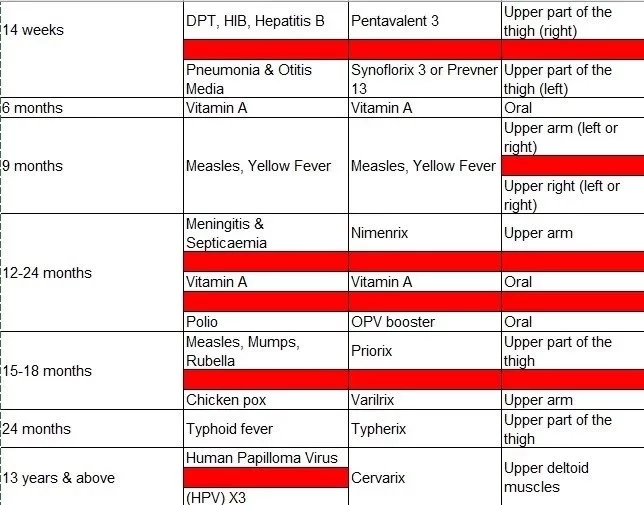From conception up until the nine months gestation period, a baby is fully protected from infections and most other diseases. A change in this equilibrium however begins to occur right from the delivery process, when the baby is passing through the mother’s vagina. The baby becomes exposed to a number of microorganisms which presents a condition different from what it had experienced for the last nine months of its life. This differing condition portends both positive changes and negative threats to its continued existence. To mitigate some of the negative risks or threats that could occur, especially from microorganisms’ infection, the baby begins to develop its own defence system known as the immune system. The major function of the immune system is to recognize foreign bodies (pathogens, nonself cells, etc), respond to these foreign bodies and remember the foreign bodies. The immune system responds to these foreign materials by producing antibodies and activating the white blood cells (lymphocytes) to fight against the invasion by these foreign bodies or pathogens. The essence of remembering these foreign bodies is to ensure that should the immune system encounter them again the body will be able to carry out an immediate elimination of such foreign bodies. This process of responding to and remembering foreign bodies is referred to as acquired immunity.
There are two major types of acquired immunity. They are:
(1) Naturally acquired immunity and
(2) Artificially acquired immunity.
I am focusing on the artificially acquired immunity in this post.
Artificially acquired immunity occurs when an individual is intentionally exposed to a foreign material and induced to form antibodies and activated lymphocytes. The foreign material introduced here is known as a vaccine and the process of doing this is known as vaccination or immunization. It must be noted that this vaccine that an individual is exposed to could be composed of a weak preparation of killed microorganisms; living, weakened (attenuated) microorganisms; genetically engineered organisms; or inactivated bacterial toxins. What these vaccines do is to simulate the disease in the body system which will cause the immune system to produce antibodies to combat the effect of the disease. The end result of immunization is to ensure that the individual immunised develops a natural defence mechanism to combat the effect of a particular pathogenic organism before the person naturally comes in contact with that pathogen. This is to ensure that when the attack happens the memory function of the immune system kicks in and eliminates the pathogens before they can cause disease in the individual. Immunization can be said to be a pre-emptive strike against pathogenic microorganisms.
It is recommended that vaccination of most children should begin when they are two months old. Prior to this age, they get passive natural immunity from maternal antibodies, usually through the placenta when they are still in the womb, and through breastfeeding after delivery.
Types of Vaccines and their Schedules
It must be stated that a vaccine only works for one pathogenic microorganism except in the case of combined vaccines. As such different types of vaccines and vaccination are carried out for different types of microorganisms. These vaccines are also administered routinely on the basis of age, and gender of the recipient, with most of them being administered to children. Below is a list of some common vaccines available, the diseases they are guiding against, and the age at which they are to be administered:


The above tables do not list out all the available vaccines however, as Scientists keep making advancement in the field of vaccine production.Most of these vaccines are administered to children within the 0-6 years’ age bracket. This is not surprising as they are the most immuno-compromised amongst humans. Particular attention must be paid especially by parents to ensure their children get the needed vaccination as at when due. A visit to the hospital, either private or government-owned, will provide necessary information as to when most of these vaccines are administered. Although most of the vaccines for babies are free, a couple of those needed by adults are to be paid for and are also a bit expensive. Prevention is always cheaper than cure though, and getting vaccinated is definitely a cheaper alternative to trying to cure any of the infections that could occur.
Hey there this is kinda of off topic but I was wanting to know if blogs use WYSIWYG editors or if you
have to manually code with HTML. I’m starting a blog soon but have no coding skills so I wanted to
get advice from someone with experience. Any help would be greatly
appreciated!
LikeLike